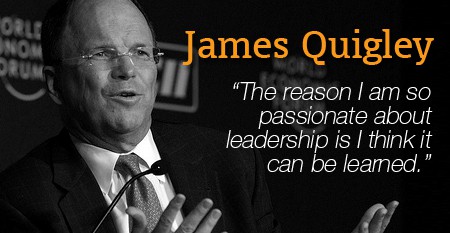It’s one thing to possess the knowledge, but it’s quite another thing to leverage it. Leaders who don’t understand the value of distributable and actionable knowledge not only limit opportunities but they’re also building huge contingent operating liabilities. One of the great challenges for any leader is to break down cultural tendencies that foster silo-centric thought patterns. Savvy leaders understand that controlling knowledge diminishes value while releasing knowledge creates value. In the text that follows I’ll share 3 tips that will help leaders become successful in the efficient and effective distribution of knowledge across the enterprise.
We have all heard the saying that “knowledge is power” we’ve all also heard the refinement of that saying which states that “the application of knowledge is power”. I prefer to take it one step further and say that “the successful application of knowledge at the right time, for the right reasons, and with the proper emphasis results in a certainty of execution that creates influence and adds value.”
Leaders who understand the catalytic power of properly applied knowledge will not only be able to leverage knowledge to increase returns, but also be able to protect knowledge to mitigate risk.
Let’s begin by defining knowledge management (KM)…While this alone may spur fierce debate, for simplicity sake I’ll define knowledge management as: “an organization’s ability to collect and convert data into information, turn information into knowledge, and knowledge into an operating advantage.” The operational advantage created through effective KM should allow an enterprise to effectively address current needs as well as to strategically drive innovation and forward planning.
Put more simply, a corporation’s employees must be able to acquire knowledge (learning), transfer knowledge (out of the head and into an information system), apply knowledge (from the information system into an actionable event), manage knowledge (execute with focus, timing, and precision), and secure knowledge (keep it from evaporating or even worse from walking out the door to a competitor). Let’s see if we can bring this issue a bit closer to home for some of you…Ask yourself the following questions:
- Have you ever had a disruption in business continuity because someone who possessed a wealth of experience and/or information retired, quit, or was terminated?
- Have you ever lost a deal or had a major operational problem because somewhere in your organization the right hand didn’t know what the left hand was doing?
- Have you ever found yourself in the unenviable position of desiring to terminate an employee only to be held hostage by the fear of losing the knowledge that they possess?
While I could go on ad-nauseum with day-to-day operating examples of how a lack of KM discipline can adversely affect a business, I think I’ve probably dredged-up enough painful memories for now. So, let’s turn our attention to the following 3 practices/concepts that can immediately be used to implement a KM system for your business:
- KM is more about people than systems: In order for KM to flourish in a corporate environment, the business must value data, information, business intelligence, research, and other forms of knowledge as a strategic corporate asset. Furthermore, KM must be recognized as one of the core elements of your corporate culture. Encourage and reward collaboration, the public sharing of knowledge, and education processes to create and scale knowledge.
- While KM is more about people and culture than systems, you still need a system: Start with some basic wire-framing that creates an ontology with taxonomies that develop standard business rules, logic, process, naming conventions, file protocols, nomenclature, and other heterogeneous standards that put everyone on the same system. By requiring everyone to work on the same platform and environment, and within the same toolsets, a certain sense of continuity and community is developed. Develop a mantra of “document, document, and when in doubt, document” and make this as painless as possible. There is an old technology axiom that states “usability drives adoptability”. Whatever toolset you select must be easy to use so that it is viewed by employees as something that makes their job easier, not more difficult. That said, there is a plethora of add water and mix content management systems, workflow collaboration tools, and KM solutions that are affordable and easy to use.
- Protect your corporate knowledge: All employees should sign work for hire, non-disclosure, non-compete, and non-circumvention agreements that make sure that all knowledge developed will remain corporate knowledge. Furthermore make it a practice to utilize copyrights, service marks, trademarks, license agreements, patents, and other intellectual property protections to protect the corporate investment into knowledge assets.
The bottom line is that you can harness disparate elements of data and information and convert them into corporate knowledge assets to create a sustainable competitive advantage, or you can choose to sit back and conduct business, as usual, The choice is yours. Thoughts?







